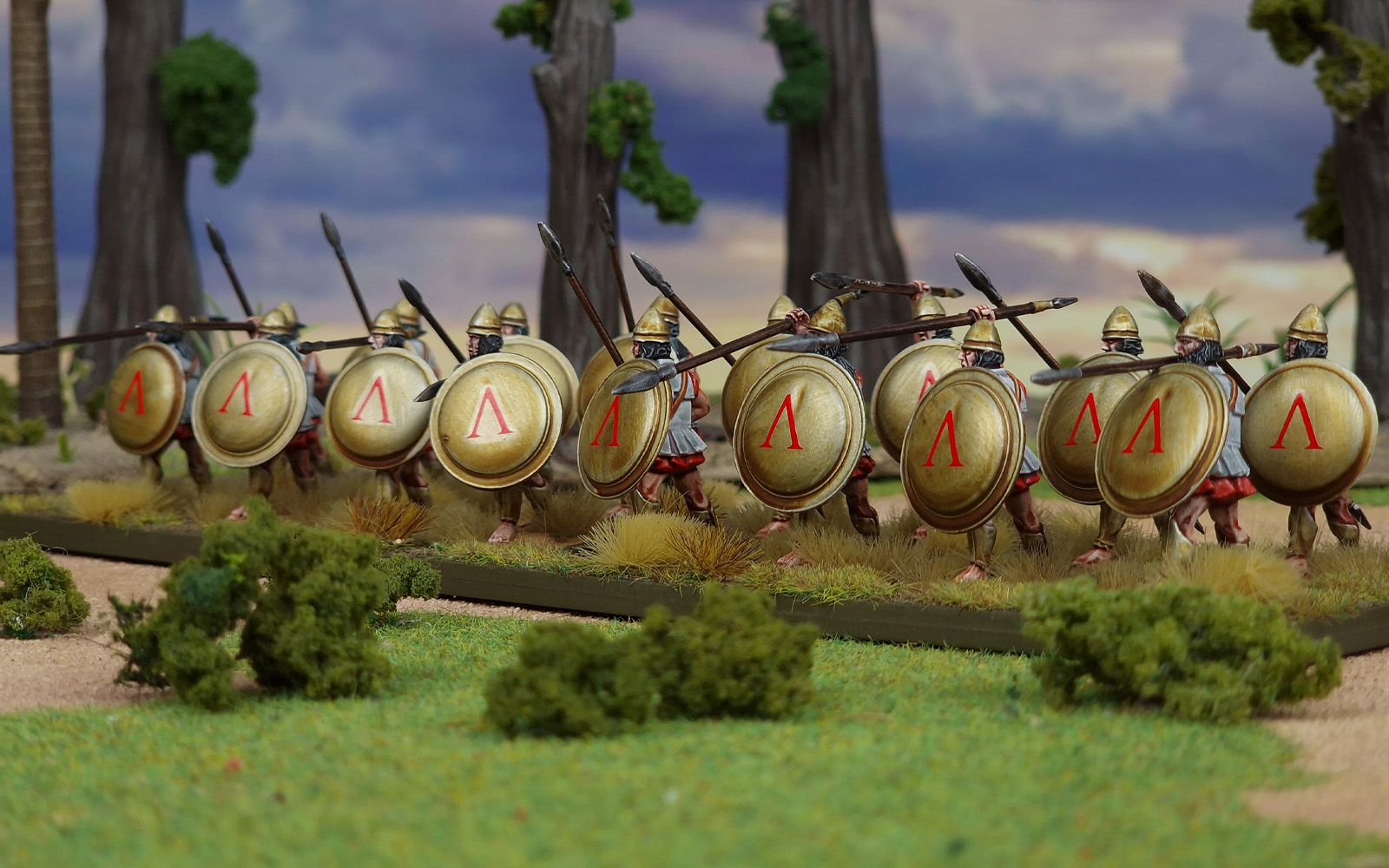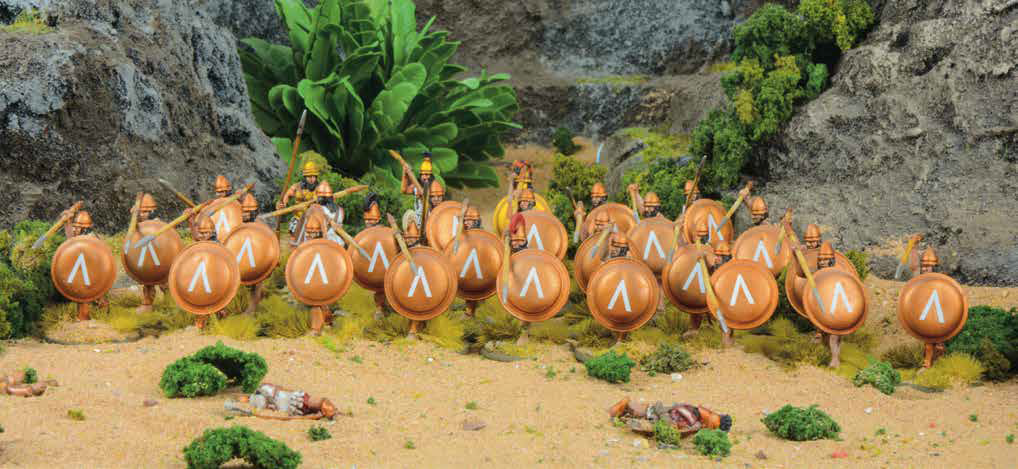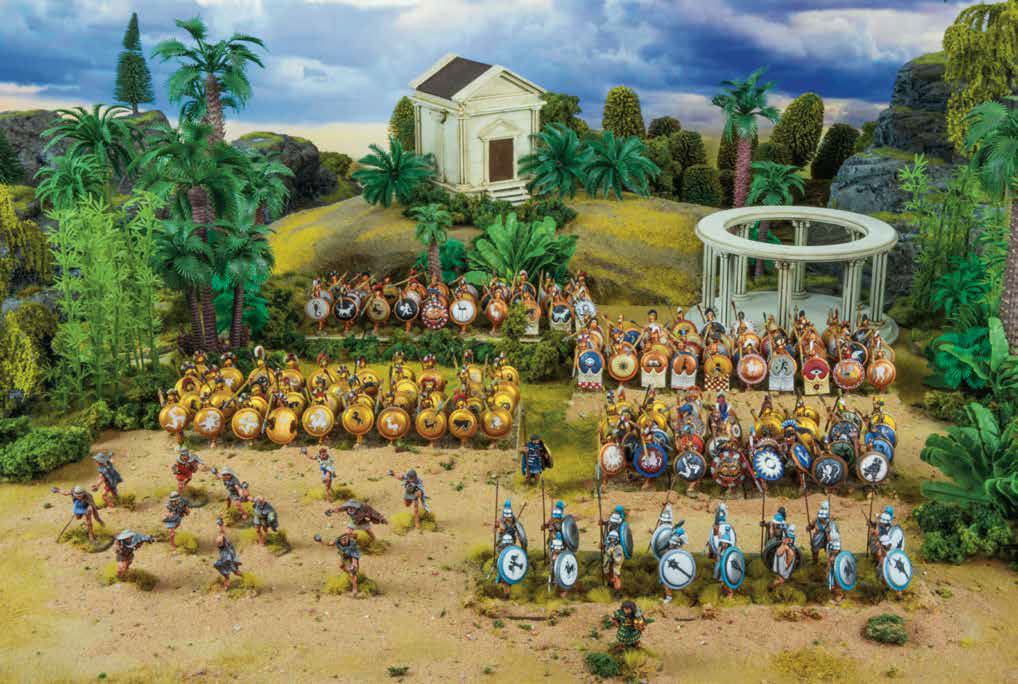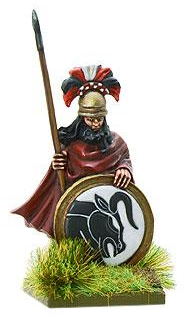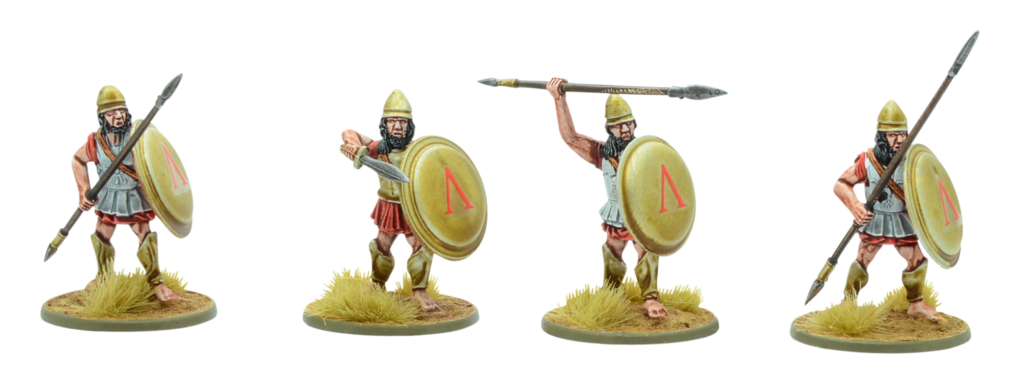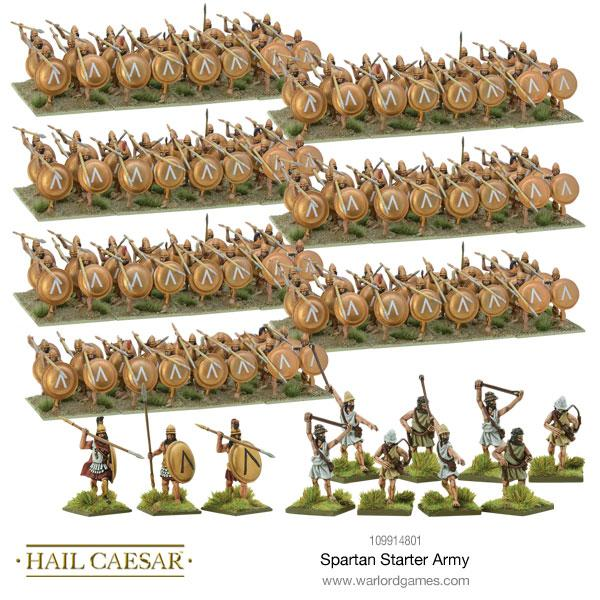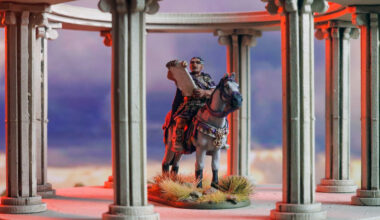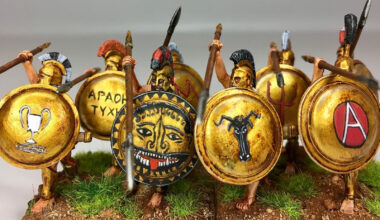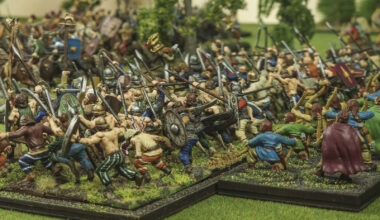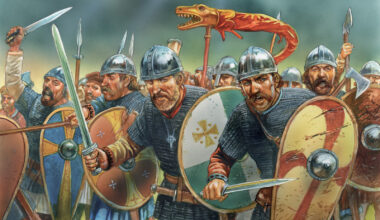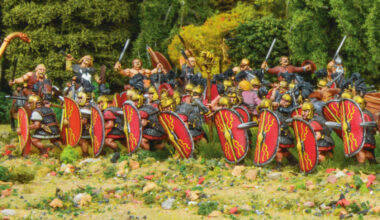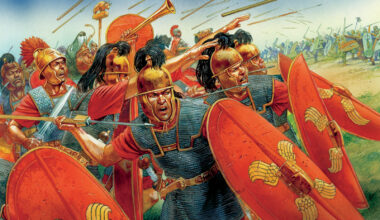With these now iconic words (and the subsequent ‘Spartan kick’!), Gerard Butler immortalised Sparta in the pop culture consciousness. The film, 300, that it’s taken from, itself based on the graphic novel of the same name by Frank Miller, is admittedly a hyper-exaggeration of both the Spartans under King Leonidas and the Battle of Thermopylae. However, the historical evidence shows that Spartan culture and warfare was just as brutal, demanding, and effective as that depicted on screen – and makes them ideal subjects for the avid wargamer!
The poleis, or city-states, of 5th century Peloponnesus (modern Greece) were not a unified nation, each city-state had their own culture, traditions, and military. The whole of the 5th century saw numerous wars throughout the region, most notably the Greco-Persian Wars, Wars of the Delian League, and the Peloponnesian Wars. Each city-state fielded its own armies of hoplite warriors, but none were more respected, and feared, than the warriors of Sparta.
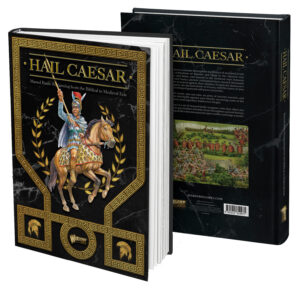
It was while reading the new contextual historical background section that opens the recently released Hail Caesar rulebook that I got inspired to explore this era of wargaming. It covers the period in a succinct and engaging way that highlights the key aspects of why the era is interesting to wargame (in fact, the book does this with all the eras it covers). Furthermore, the example division it displays looks amazing, especially with all the unique imagery depicted on each warrior’s hoplon shield; the spectacle of huge swathes of troops marching across dusty plains to stab and cut at their enemies is an undeniably compelling image. The more I read, including information presented in SPQR, the more I knew I wanted to make an army from the period.
One of the undeniable attractions of historical wargaming is learning about the historic era while re-enacting it on the gaming board. So, I set about doing a bit of research while planning out my force. It was the computer game Assassin’s Creed: Odyssey that turned my attention to a specific historical period, as it is set during the Peloponnesian War between Athens and Sparta.
This is what I eventually decided to base my army on, a Spartan army of the Peloponnesian War. I figured that this force could be used throughout the whole period, from the Greco-Persian War up to the Phyle Campaign and beyond. Since I’m not creating the force on any specific battle, I chose to use the army list rules and point values in the Hail Caesar rulebook to build my force. A good point value total to build toward is 400 points, this provides enough options to fill about three divisions while still being manageable on an 8′ x 4′, or even a 6′ x 4′, gaming board. This will allow me to make an army capable of fighting any other 400-point army from the same era.
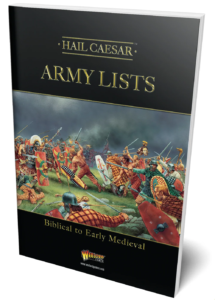
As an aside, by using the MDF Conversion Bases made by Sarissa Precision and available here, I can base my models in such a way as to be able to use them for both Hail Caesar and SPQR, hitting two hobby birds with one stone, so to speak. I didn’t plan out a specific SPQR warband just yet, I figured there’d be enough individual models in the army to build a warband from when needed. Instead, I focussed on the Hail Caesar army. After familiarising myself with the rules for army lists in the Hail Caesar rulebook, I looked at the Army Lists book for more specific guidance on how a Hoplite Greek force from the period might be arranged.
I decided my 1st Division will be a solid core of Spartan Hoplites, led by the upgraded Spartan Army General. This division will be the solid, dependable centre formation upon which the other divisions will hang. With the special rules Spartans have (Drilled, Stubborn, Elite, Phalanx), they will be formidable foes and very difficult to shift. In a battle of attrition, they can easily endure longer than the opponent, giving the other divisions opportunity to press the flanks of the enemy.
Spartan Army 1st Division
| Spartan General | 25 Points |
| Spartan Heavy Infantry hoplites armed with long spears | 41 Points |
| Spartan Heavy Infantry hoplites armed with long spears | 41 Points |
| Spartan Heavy Infantry hoplites armed with long spears | 41 Points |
| Spartan Heavy Infantry hoplites armed with long spears | 41 Points |
My 2nd and 3rd Divisions will be identical, and they will each represent the ‘other’ warriors that fought alongside the Spartans. Such as periokoi Hoplites, which are soldiers drawn from the surrounding lands controlled by Sparta, but not from the city itself, and helots, slaves pressed into service by Sparta. The helots usually formed the light troops and skirmishers. Lastly, each of these divisions had a unit of light cavalry. The hilly and mountainous lands of Greece hindered cavalry, thus the reliance on heavy hoplite infantry.
Spartan Army 2nd & 3rd Divisions
| Spartan General | Free |
| Hoplite Heavy Infantry armed with long spears | 32 Points |
| Hoplite Heavy Infantry armed with long spears | 32 Points |
| Light Cavalry armed with javelins (Small Unit) | 17 Points |
| Skirmishers armed with javelins (Small Unit) | 11 Points |
After purchasing a box of plastic Spartans, I set about assembling my first unit. I chose to use all the bodies wearing linothorax linen armour as my Spartans. Once assembled and undercoated in white, I painted all the metal areas in Army Painter Shining Silver, then overpainted that with Army Painter Pallid Bone Speed Paint, giving a pleasing bronze finish. The rest of the model was painted in the appropriate Army Painter Speed Paint (the Speedpaint Starter set provides an excellent selection) before being based.
I’ll continue using this technique for the rest of the army before applying the distinctive lambda letter decals to the Spartan shields (lambda being the Greek letter ‘L’, for Lacedeamon, the name of the region in which Sparta rules) and other, more varied decals to the shields of the periokoi hoplites.
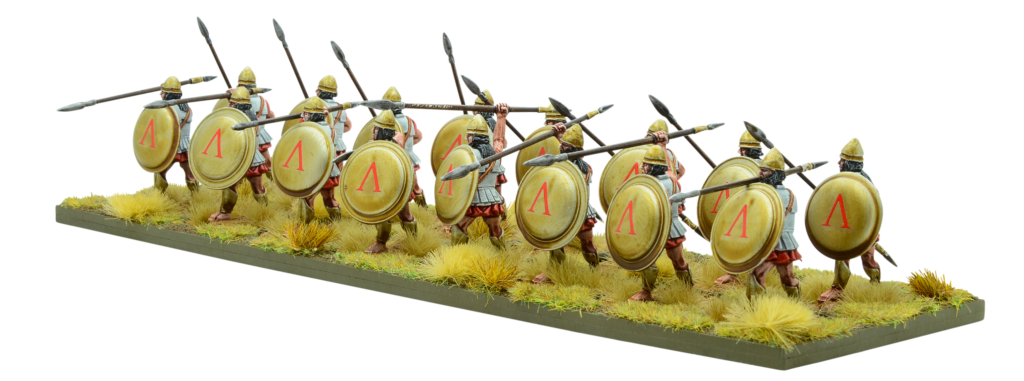
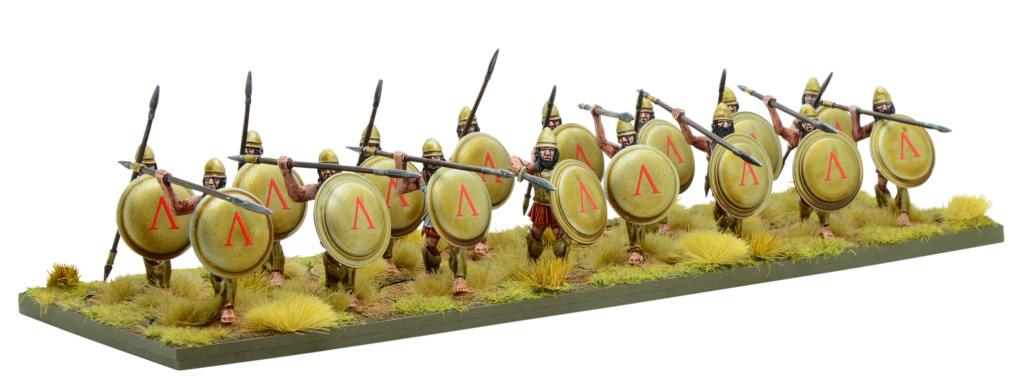
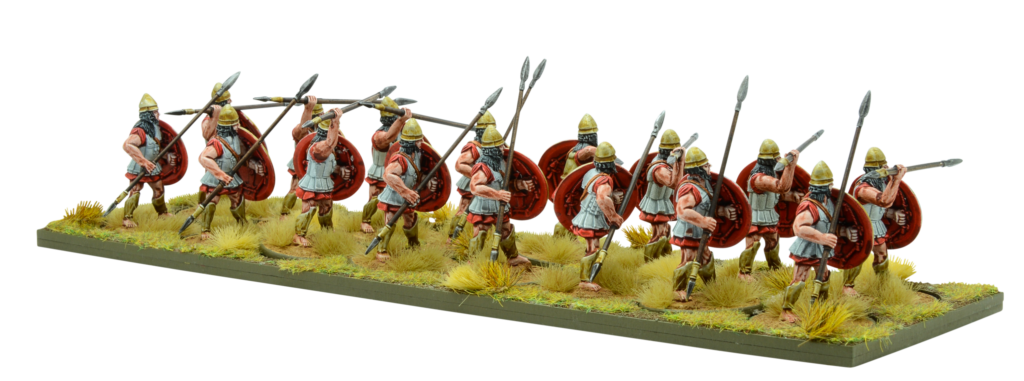
Once these first few units are complete, it’s time to move on to the remaining units and divisions. It shouldn’t be too long before I’m yelling “This is Sparta!” across the table at my somewhat bemused opponents…
Inspired?
The Spartans are possibly the most famous fighting men in history, and rightly so! Spartan Hoplites were respected and feared throughout Greece, and it was long thought that no land power could stand against them. Lacedaemon, with Sparta as its capital, stood firm against the imperial ambitions of the Athenians.
Those too poor to fight as a hoplite would serve as lightly equipped infantry, usually with a javelin, stones or a sling. Lead shot was often used by the Greeks, which would be carried in small bags. These lead bullets were sometimes inscribed with such messages as “Take this!”
Our Spartan starter army contains no fewer than 160 plastic Spartan Hoplites, as well as three metal command figures – representative of the finest group of warriors among the troop, eight metal Greek slingers and four Spartan shield decal sheets with which to adorn your new troops.
